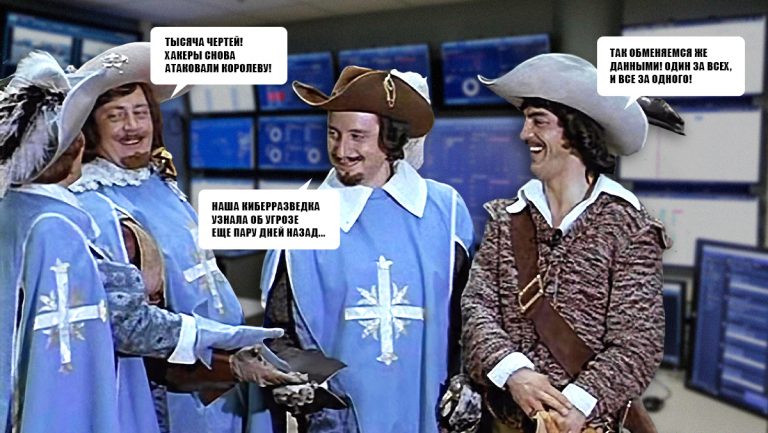New media currency. Study of audience attention to online advertising using eye tracking technology (part 2)
How to evaluate the effectiveness of advertising in the context of information noise and changing patterns of consumer behavior? Classic metrics count a view, even if it was not completed: the user could look at the screen, but not see the ad. The specificity of digital formats is such that not all commercials occupy 100% of the screen, which means that the audience has the opportunity to avoid watching. We decided to test a technological approach in order to study the attention of users to ads on different media services and screens.
In the previous article, we already talked a little about our pilot study of Attention Economy Russia – goals, background (global project and localization) and TV results. This time I would like to share the details of the digital attention assessment that we conducted in partnership with the Mail.ru Group UX laboratory. As part of this phase of the study, the team used eye trackers to track a person’s gaze when watching video ads on desktop and mobile devices.
Our approach
The aim of the study is to study advertising consumption from the point of view of a single metric of audience attention, for which advertisers are actively competing today. As part of the pilot, we decided to conduct a qualitative study, and then scale up the project and use quantitative analysis mechanics.
For digital research, we have identified three types of attention:
- complete (eye contact from 3 seconds without distraction to other content)
- background (contact for less than 3 seconds or when there are distractions such as reading text)
- absent (flick through, no gaze at all, or less than 1 second eye contact).
During the analysis and experiments, four key advertising video formats were studied:
- in-stream (inside video content, for example, a TV series or video)
- out-stream video ads (in the surrounding content), which was further divided into in-content (mainly in the text of the article) and in-feed (in the news feed of the social network)
- stories.
The main questions that we wanted to answer as part of the study were defined as follows:
- Is there a difference in attention to the same content on different screens?
- Is the sequence of videos important when browsing the Internet? On which platform does it play a more significant role?
- How does attention differ depending on the ad format?
- Does sound affect performance?
- Does attention efficiency differ on different screens and formats?
We put forward the following hypotheses:
- On different screens and in different formats, ads receive different intensity of attention.
- The more intense the attention to the advertisement, the higher its effect.
To test hypotheses, as well as for TV research, we settled on Moscow and carried out measurements among the most demanded audience among advertisers – aged 25-44. The recruiting of the “average Muscovite” was done according to the audience profile of the Mediascope research panel (the largest media meter in Russia) – social demographic parameters and characteristics of media consumption. This was necessary for further interpretation of the results in relation to generally accepted indicators in the media market. All respondents had to be users of the tested digital services.
The key parameter for evaluating the effectiveness was the ad recall. In the course of our research, we decided to test how attention to an advertising message is converted into memorization (with and without a hint).
Technology and mechanics
If there were enough cameras installed at home to determine a person’s attention to TV advertising, then in digital this method would not help to understand the real direction of the gaze. On television, advertising occupies 100% of the screen, while on the Internet it all depends on the device from which the user logs into the network and on the platform that he uses at the moment.
On a desktop, videos can occupy from 10 to 100% of the screen, on smartphones – from 10-15 to 100%, but the video is easy to scroll. For a qualitative assessment, we analyzed not only attention, but also the user’s interaction with advertising (closed, scrolled, etc.).
To accurately determine the attention to ads on mobile devices and on the desktop, we used eye-tracking technology. It was important for us to improve the accuracy of the results, therefore, in the respondent’s questionnaire, we indicated points about the presence / absence of eyelash extensions or contact lenses / glasses. Sometimes these factors can interfere with the results of the assessment, so in this way we maximized the quality of the analysis.
In laboratory conditions, trackers automatically recorded a person’s gaze. We asked users to watch content on those sites that they constantly use under their accounts, and in the case of mobile devices, on their gadgets. We analyzed how users react to different ad formats that we studied in the study.
After the eye-tracking measurement, we invited users to complete a survey about the viewed ads. First, they asked an open-ended question: “What kind of ad did you see during the last session?” – this was how spontaneous recollection was tested. Then they showed frames of commercials without specifying the brand and asked to remember if they saw them while consuming the content – recall with a hint.
results
Speaking about the results, I would like to note that the study of attention in the digital environment turned out to be more difficult than on TV. This is due to the fact that it is necessary to assess not only the direction of gaze into the screen, but also attention to the content inside the screen. Plus, we don’t always know what kind of ads our respondents will see. In terms of channels, we were able to set up targeting for the required respondents (their accounts / mobile device data) or evaluate the recognition of advertising materials during the measurement.
In the case of the format of the stories, during the tracking process, it became clear that it would be more difficult to capture and interpret the results, since the speed of switching video materials is much higher (to which we have developed personal reaction speed!). That is why we decided to exclude this format from the research results.
Now let’s move on to the results that we managed to get.
Video ads attract mostly background attention, with full attention being watched by about a third of users on mobile devices and about a quarter on desktop. Also, on mobile devices, users are much less likely to deliberately refuse to view ads (deliberately skip or scroll through videos).
For different ad formats, there is clearly a difference in the distribution of attention intensity. At the same time, the attention of the audience is dynamic: it switches between different levels of intensity in the process of contact.
Despite the fact that the level of full attention is significantly higher in in-stream formats, it is unstable – the share of full attention decreases after watching two commercials (which is also typical for in-content video ads). The same is true for in-content formats. In in-feed content, the level of full attention practically does not change even after watching five commercials. Thus, we can conclude that videos in the social network feed attract the same attention, in whatever order they are viewed. Among out-stream formats in in-feed videos, the share of full attention is higher and the share of absent attention is lower.

We hypothesize this may be related to the size of the ad on screen and its value. In-stream format is shown instead of main content. In-feed and in-content are natively embedded in content of interest to the user.
In the first wave of research, there is a significant increase in the memorability of video ads (both spontaneous and prompted) on the desktop with full attention. The presence of sound also has a positive effect on ad performance.
However, we faced difficulties in identifying the effectiveness of attention types on mobile devices. The intensity of attention according to the test results did not show significant differences in the effect on ad recall. This is a research artifact that requires additional validation on a wider sample of respondents and a more consistent measurement of viewing situations per respondent.
In-feed videos have a significantly higher level of memorability than other formats. Thus, if you managed to catch the audience’s eye on social networks, then the probability of success is high. Bright, non-standard videos embedded in the social media format are more effective in building knowledge.

Other observations revealed during the study are also interesting.
For example, attention to an advertisement is influenced by previous experience with a brand. If the respondents have previously used the brand’s goods or services, then the share of full attention to its advertising is twice as high. It is brand consumption that is the most stable indicator in terms of influence on attention: neither attitude towards the brand, nor loyalty show such a correlation.

User actions affect attention. For example, the ability to skip ads in a specific area of the screen allows you to catch attention in the background. Waiting for the familiar “Skip” button lowers the audience’s gaze to the lower right corner and allows you to catch what is happening in the commercial, at least from the right side.
Plans
Research insights require additional checks on a larger sample, but it is already clear that new knowledge allows not only more efficient planning of placements on various devices and advertising platforms, but also improve guidelines aimed at the creative component of advertising materials. The Attention Economy study is a meeting of creative and media expertise that allows you to find the optimal balance to maximize the effectiveness of advertising in a comprehensive manner.
We plan to scale up the research in the second wave. In it, we will try to cope with the artifacts of the pilot stage, attract a sample that is representative of the entire country, and also study the relationship of attention with viewability indicators, the size of ads on the screen, emotional reaction to creativity and a more expanded list of brand metrics.
As in the case of TV, our most important ambition is to create a new currency for the advertising industry – qCPM, in which “ku” is responsible for engagement and attention. In the long term, this will allow linking attention to business effect and sales, which will open up new opportunities for planning brand communications.






